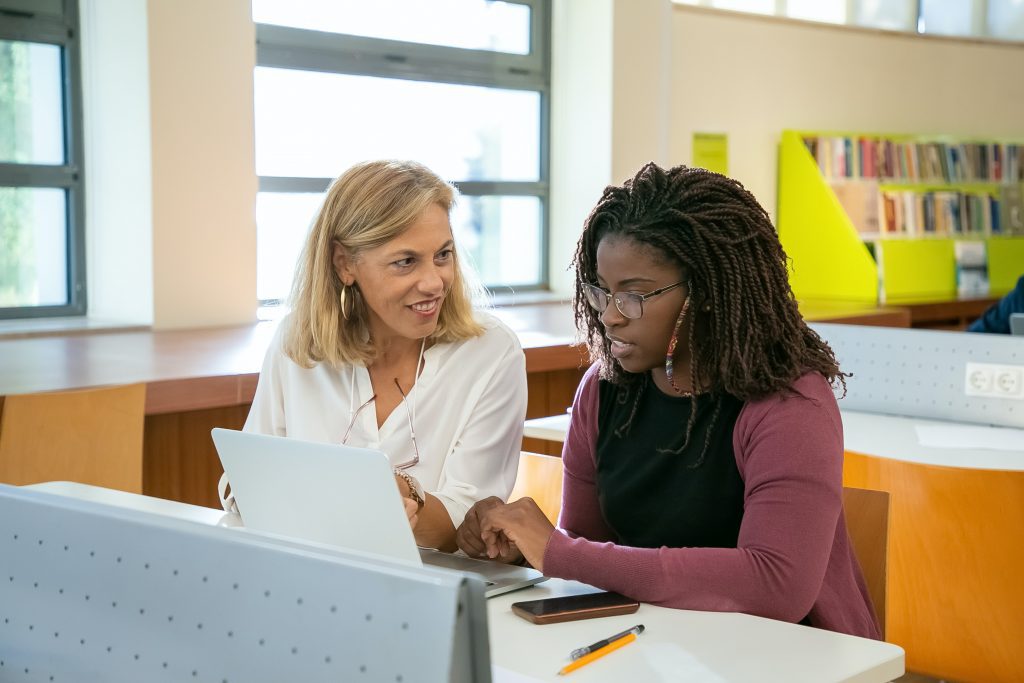Four Research-Based Solutions to Alleviate Teacher Burnout
In previous blogs, I’ve discussed the importance of social-emotional learning (SEL) of students and developing positive teacher-student relationships. (See Practical Applications from Research on Social-Emotional Learning; Four Approaches to Create Positive, Upbeat Classrooms; and Positive Teacher-Student Relationships Have Cascading Benefits.) Both students’ social-emotional learning and positive student-teacher relationships depend on teachers’ own social-emotional well-being. The figure below shows that when teachers are thriving, they are more likely to have good relationships with their students, which leads to better classroom management and more effective implementation of SEL, which in turn lead to a more positive classroom climate, which ultimately leads to greater student learning – all of which circle back to contribute to greater teacher thriving.
The opposite of teacher thriving is teacher burnout, which has become a pressing national concern. Teachers leaving the profession has increased by a third in the past decade. In addition, the pipeline of teachers is shrinking; 27% fewer education degrees were awarded in 2016 compared to 2008. The teacher shortage is real, it is large, and it is growing. From 2011 to 2016, the number of schools reporting that it was “very difficult” to fill a vacancy doubled to 36%. Prior to COVID, U.S. schools were struggling to recruit and retain teachers. The COVID pandemic has accelerated the challenge; an estimated 27% of teachers are considering leaving the profession due to “burnout.”
Understanding Teacher Burnout
Burnout refers to feelings of emotional exhaustion, lack of accomplishment, and low work satisfaction. When competent teachers feel burned out, they may leave the profession or choose to “stay and quit” by showing up but doing the minimum. Either way, all stakeholders suffer.
Burnout occurs because teaching is a complex, demanding job. It requires constant use of social-emotional skills. Teachers must control their reactions to students’ provocative behavior and deal with frustration as students distract from a carefully planned lesson delivered under time and accountability pressure. Yet teachers receive little support to develop their own social-emotional coping skills.
Reversing Teacher Burnout
What can you do to reverse the trend in teacher burnout? Research suggests four key solutions:
First, support teachers’ personal and professional growth.
Give teachers constructive feedback that is genuinely useful. In a large international study (TALIS), teachers said that their evaluation feedback was too often perfunctory, conducted only for administrative purposes, and gave little advice for improvement. Engage professional development that genuinely boosts teachers’ own social-emotional skills and helps them promote their students’ social-emotional skills. (Review my previous blogs Practical Applications from Research on Social-Emotional Learning and Four Approaches to Create Positive, Upbeat Classrooms.) The figure above shows why boosting teachers’ social-emotional skills is vital to teacher well-being. In one of our studies, teachers said that successfully implementing a prosocial SEL program “re-energized” their teaching and made teaching more enjoyable. Low student motivation and poor student behavior are primary causes of teacher burnout.
Second, support collaboration.
Isolation is another primary cause of burnout. High-quality relationships with colleagues result in greater career satisfaction and less stress. Teachers need to care for each other as professionals, yet many have little opportunity to collaborate with peers. In the international TALIS study, collaborative school culture was one of the strongest predictors of teachers’ self-efficacy and job satisfaction. Teachers are more energized in a work environment with collaborative structures that support learning from and with one another.
Third, distribute leadership.
Teachers should share leadership responsibilities based on their strengths and interests. Teachers should be given autonomy and power to address school challenges because they are often the ones closest to the issues. (For more on this, see J. Spillane’s 2012 book Distributed Leadership 4th edition).
Fourth, build teachers’ collective efficacy by implementing the first three solutions.
Collective efficacy refers to the belief of a group of teachers that through collective effort they are capable of achieving school goals. Together, teachers set group goals, monitor progress, and celebrate when the goals are met. They refer to “our” rather than “my” students because every teacher is jointly responsible for each student. Hattie (2016) identified teachers’ collective efficacy as the most powerful attribute of a school in promoting student achievement. Collective efficacy reduces burnout and leads to higher levels of enthusiasm, persistence, work satisfaction, and intent to stay in the profession.
Focusing on these four solutions will help turn teacher burnout around and help your school become a place where both students and teachers thrive.
Dr. Christi Bergin is associate dean of research and innovation at the University of Missouri College of Education. She is a co-founder of the Network for Educator Effectiveness.
The Network for Educator Effectiveness (NEE) is a simple yet powerful comprehensive system for educator evaluation that helps educators grow, students learn, and schools improve. Developed by preK-12 practitioners and experts at the University of Missouri, NEE brings together classroom observation, student feedback, teacher curriculum planning, and professional development as measures of effectiveness in a secure online portal designed to promote educator growth and development.




